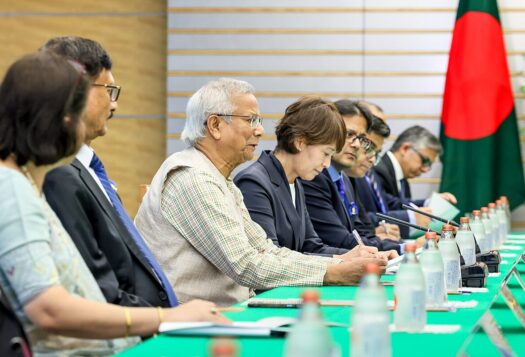
Afghanistan is in the first phase of a COVID-19 vaccine rollout, having received only a half million doses of vaccines from India, and 468 thousand under the COVAX program, while around 35 million people are in the queue to receive the vaccine. While a third wave of the COVID-19 pandemic in Afghanistan has seen cases rise, virus skepticism and a fear of unfair vaccine distribution of vaccine compound the challenges ahead. The rise of new variants, coupled with a weak healthcare infrastructure, lack of security, a dysfunctional delivery system and slow vaccine procurement process, is a crisis in the making for Afghanistan.
Poor management of the first and second waves of COVID-19 in Afghanistan has put the Afghan people in a precarious position. The government has not done a good job managing the stimulus funds to support its citizens during the quarantine and promoting awareness programs. People in the cities either had no choice but to stay home because of the poor economic situation, and a sizable portion of the population believed the virus was a hoax due to weak awareness programs by the government. When fewer people in Afghanistan were infected or died of COVID-19 during the first and second waves, the government boasted that it had managed the pandemic successfully. More realistically, these lower numbers were the result of a young population and low testing rates. Many COVID-related deaths were likely not included in the official tally.
Poor management of the first and second waves of COVID-19 in Afghanistan has put the Afghan people in a precarious position.
As cases rise—there has been a 30 percent increase over the past few weeks—many fear the country will develop its own variant. Afghanistan is lagging behind in vaccine rollout both in rural areas and in cities. Though the Asian Development Bank and the World Bank approved USD $50 million and USD $113 million grants respectively to help the Afghan government purchase and deploy safe and effective COVID-19 vaccines that cover more half of its population, pervasive corruption is an obstacle in the way of guaranteeing the vaccine reaches everyone according to a priority system. People’s fears are very valid, as there are reports of embezzlement of the relief funds for the people affected by the pandemic. Officials at different levels of government, including minsters and local government administrators, are reported to have embezzled millions from the relief funds and the budget allocated to combating the pandemic. The cases of 223 individuals in question were sent to the attorney general’s office for further investigation, while many others were already arrested. There is also little faith that the government will distribute the limited doses highest-risk individuals.
Devastating poverty and economic challenges, widespread conflict and insecurity intensify Afghanistan’s COVID-19 crisis, which has slipped beyond government control. The government currently does not have control over around half the country’s territory. Government officials must coordinate vaccine distribution with NGOs and negotiate roll-out with the Taliban and various insurgent groups. Despite the Taliban’s commitment to “support and facilitate” the vaccination programs, increased campaigns between the government and the Taliban and the new wave of violence make it challenging for the vaccine teams to conduct vaccine outreach in many districts and even cities. Meanwhile, citizens who remain convinced the virus is a hoax, both in cities and villages, are unwilling to get vaccinated. High numbers of vaccine and virus skeptics make the vaccination campaign likely to fail, while there is no mechanism to track vaccinations and inform citizens of when to get vaccinated.

As South Asia, and particularly India—the first and major provider of vaccines to Afghanistan—has been devasted by the new wave and variants of COVID-19, Afghanistan is facing significant challenges in terms of vaccine supply and protecting people from the new variants spreading throughout the country. Frequent flights between India and Kabul and refugees returning from Iran and Pakistan would likely contribute significantly to the case increases in Afghanistan.
With questions about how fair Afghanistan’s distribution is amidst a new wave and new variants, more than a half a million people have received the vaccine so far. As part of this, ten thousand high-ranking government employees are receiving the vaccine through the first batch delivered from India, a system at odds with the priority system many other countries are implementing. Internationally, successful rollouts have prioritized to the elderly and those with pre-existing conditions. Humanitarian agencies have estimated that in Afghanistan, 8.6 million people are considered among the most vulnerable. Outreach to those who live in conflict zones and/or remote areas is a challenge that could lead to humanitarian disaster.
Ten thousand high-ranking government employees are receiving the vaccine through the first batch delivered from India, a system at odds with the priority system many other countries are implementing.
The government in Afghanistan, international community and the humanitarian organizations neutral to the conflict in the country must work to overcome these many obstacles for a successful and timely vaccination campaign. Building trust through awareness raising programs, the government and its stakeholders must negotiate through the COVAX program and with donors to procure a sufficient number of vaccine doses to inoculate Afghanistan’s entire population. This includes reaching an agreement with the insurgents to allow the vaccines teams to travel safely in the areas controlled by the Taliban and any other insurgent groups to vaccinate all its people and prevent a grave economic and humanitarian crisis.
***
Image 1: Wakil Kohsar/AFP via Getty Images
Image 2: Wakil Kohsar/AFP via Getty Images


